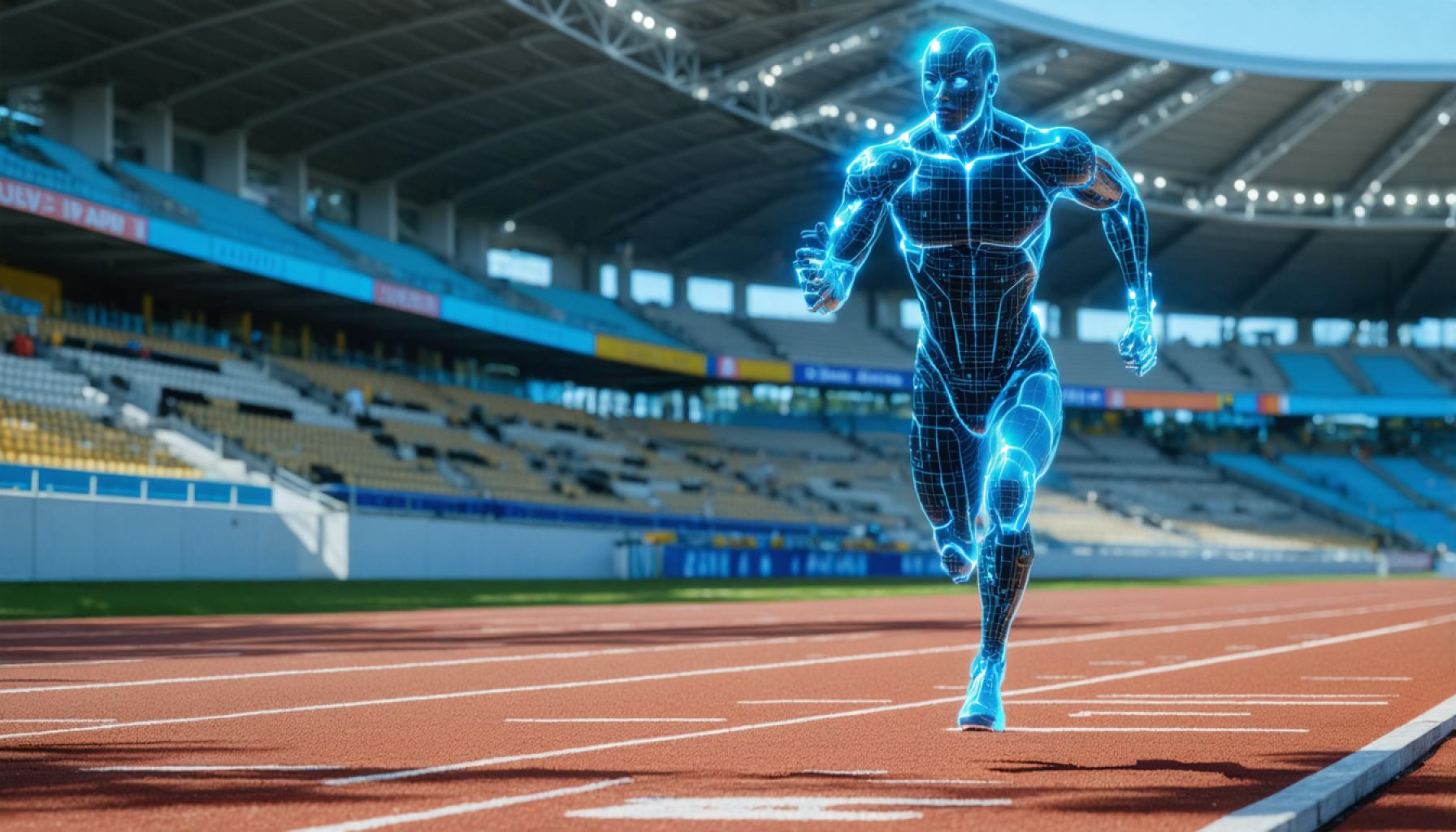- Artificial intelligence (AI) is transforming athletics by enhancing performance improvement and redefining training techniques.
- Wearable sensors and AI-powered video analysis offer real-time insights, enabling athletes to refine techniques and minimize injury risks.
- AI’s data analytics capabilities predict race outcomes and tailor training regimens based on comprehensive datasets.
- Coaches use AI to create individualized training strategies, simulate race conditions, and prepare athletes for various challenges.
- AI influences sports betting by reshaping odds calculation and engages fans on a new level.
- Future applications include virtual coaching, AI-guided race strategies, and improved officiating to reduce human error.
- Ethical considerations arise around data privacy and balancing human intuition with algorithmic precision.
- AI emerges as a partner in athletics, bridging the gap between human abilities and technological innovation.
Athletics, long defined by human prowess and endurance, now finds itself in an age of transformation, driven by the relentless march of artificial intelligence (AI). At the heart of this revolution are AI-driven tools that unlock new dimensions of performance improvement, propelling athletes beyond the limits of traditional training.
Imagine wearable sensors that track every nuance of an athlete’s form—each stride, tilt, and micro-movement recorded and analyzed in real-time. This technology empowers athletes to fine-tune their techniques with surgical precision, optimizing stride efficiency while minimizing injury risks. Consider the power of AI-powered video analysis, where every fraction of a second in a race can be dissected to reveal strategic insights, allowing for game-changing adjustments.
In the realm of data analytics, AI stands as the unseen coach, silently crunching datasets from competitions, training logs, and climatic conditions to predict race outcomes and tailor training regimens. Even more groundbreaking is AI’s ability to forecast injury risks, making it possible for athletes to adjust their schedules before issues arise.
The influence of AI extends beyond the track. Algorithms now grip the world of sports betting, reshaping how odds are calculated and offering a new layer of engagement for fans. Meanwhile, coaches leverage AI’s predictive prowess to devise individualized training strategies, simulating race conditions and preparing athletes for an array of challenges.
Looking ahead, AI promises to transform the very arena of athletics. Envision virtual coaching sessions, AI-guided race strategies, and enhanced officiating that reduces human error. Yet, alongside these possibilities come ethical questions about data privacy and the delicate balance between human intuition and algorithmic precision.
The message? AI is not merely a tool but a partner in mastering track and field, bridging the gap between human grit and technological innovation. As this relationship deepens, athletics stands on the brink of an era where dreams are no longer limited by the physical but propelled by the digital.
How AI is Revolutionizing Athletics: Unseen Coaches and Data-Driven Strategies
Real-World Use Cases
Artificial intelligence is transforming athletics by offering tools that enhance performance and reduce injury risks.
1. Wearable Sensors and AI:
– Wearables embedded with sensors collect biomechanical data that AI analyzes to improve an athlete’s technique. For example, a marathon runner can optimize stride length and cadence by reviewing the AI-generated insights from practice sessions.
2. Video Analysis:
– AI-powered systems analyze video footage to provide detailed feedback on form and strategy. Football teams can use this by reviewing game footage, where AI highlights areas of improvement like positioning and decision-making.
3. Injury Prevention:
– By analyzing historical data and real-time metrics, AI can predict potential injuries before they happen. This data allows trainers to adjust an athlete’s routine, thus preventing overuse injuries common in sports like basketball and tennis.
4. Sports Betting:
– Deep learning algorithms have revolutionized odds calculation in sports betting, offering more accurate predictions by processing vast amounts of data such as player statistics, weather conditions, and historical performances.
Market Forecasts & Industry Trends
The AI sports analytics market is poised for significant growth. According to a report by MarketsandMarkets, the global sports analytics market size is projected to grow from $2.5 billion in 2021 to $8.4 billion by 2026, at a CAGR of 27.3%. This growth is driven by increased demand for real-time data analysis, performance enhancement, and injury prevention.
Reviews & Comparisons
Athos vs. Catapult – Wearable sensors from companies like Athos and Catapult provide athletes with vital performance data. Athos focuses on muscle activity, while Catapult delivers GPS analytics.
Coach’s Eye vs. Dartfish – Both provide video analysis but differ in user interface and features, with Coach’s Eye focusing on ease of use and Dartfish offering detailed movement breakdowns.
Controversies & Limitations
– Data Privacy: The massive data collection by AI tools can lead to privacy concerns. Athletes and teams must ensure robust data protection measures are in place.
– Ethical Use of AI: There’s an ongoing debate on whether AI should be utilized to its full potential or if it undermines the spirit of competition.
Security & Sustainability
Protecting athlete data with secure and sustainable solutions is crucial. Companies like IBM and Microsoft have established frameworks to ensure the ethical use of AI in sports. Emphasizing encryption and anonymization techniques ensures data security.
Insights & Predictions
As AI continues to evolve, expect innovations like AI-driven broadcasts that enhance viewer experience and autonomous officiating to minimize human error. In the coming decade, AI’s role in sports will become more profound, creating a more level playing field.
Pros & Cons Overview
Pros:
– Enhances athlete performance
– Reduces injury risk
– Personalizes training programs
Cons:
– Potential data privacy issues
– High implementation cost
– Ethical considerations in competition
Actionable Recommendations
1. Embrace Wearable Tech: Integrate wearable technology into training to gather insightful performance data.
2. Leverage Video Analysis: Utilize AI video analysis to refine techniques and strategies regularly.
3. Focus on Data Security: Prioritize data protection by working with technology providers committed to privacy and security.
For more information about AI advancements, explore resources provided by major tech organizations like IBM or market leaders in AI-driven sports solutions like Catapult.
